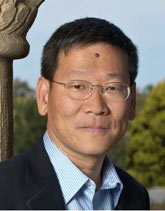

Friday - January 21, 2011
SLAC Today is
available online at:
http://today.slac.stanford.edu
In this issue:
From the Chief Scientist: SLAC Energy Task Force Town Hall Meeting
From the Director: Biology with Free Electron Lasers
SLAC Researcher Helps Locate Hidden Active Galaxies
 |
 |
|
Friday - January 21, 2011 |
From the Chief Scientist: SLAC Energy Task Force Town Hall Meeting In the fall, SLAC Director Persis Drell asked me, in my role as chief scientist, to develop a plan for expansion of SLAC's research program by establishing new strategic directions in energy-related research. We agreed that this could include the integration of separate projects into a larger coordinated effort with defined goals and stronger and sustained support, a major expansion of existing research, creation of entirely new research in areas of strategic importance, and we should also consider options for partnering with other national labs and industry, as well as for research infrastructure development. From the Director:
|
Events
Access
AnnouncementsLab Announcements
Community Bulletin BoardTrainingLab Training
Upcoming Workshops & Classes
News
|
|
| | ||
|
|
||
 <%
Response.AddHeader "Last-modified", getArticleDate()
'Response.AddHeader "Last-modified","Mon, 01 Sep 1997 01:03:33 GMT"
'Monday, December 06, 2010
%>
<%
Response.AddHeader "Last-modified", getArticleDate()
'Response.AddHeader "Last-modified","Mon, 01 Sep 1997 01:03:33 GMT"
'Monday, December 06, 2010
%>View online at http://today.slac.stanford.edu/. |
||